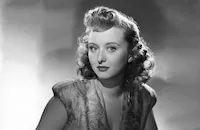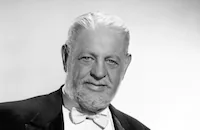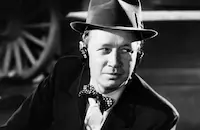Three Little Girls in Blue

Brief Synopsis
Cast & Crew
Bruce Humberstone
June Haver
George Montgomery
Vivian Blaine
Celeste Holm
Vera-ellen
Film Details
Technical Specs

Synopsis
In 1902, in Red Bank, New Jersey, the three Charters sisters, Pam, Liz and Myra, have inherited a chicken farm and, they hope, a substantial sum of cash from their aunt Cora. The girls plan to use the funds to travel and seek rich husbands. When lawyer Hoskins informs them that the amount is quite small, the sisters decide to pool their respective shares and have one of them pretend to be the "wealthy" Miss Charters. They reason that after she has found a rich husband, the other two should have no problem attracting similar males. Pam is selected to be "rich," while Liz and Myra are to play the roles of her social secretary and maid. They move to the luxurious Chalfonte Hotel in Atlantic City and, while checking in, meet millionaire Steve Harrington. Steve sends Pam champagne, which is delivered by the wine steward, Mike Bailey, who takes a fancy to Myra. The next day, Pam fakes a drowning accident in the hope of being rescued by Steve, but winds up rescuing him with the help of his friend, Van Damm Smith, another apparent millionaire. Both Steve and Van begin an earnest courtship of Pam, while Myra sees Mike. The girls's expenses mount up and soon they are short of cash with no proposal of marriage in sight, as both of Pam's suitors are interfering in the other's courtship. Pam decides to invite Liz along on the next date on the pretext that it is Liz's birthday. While Myra and Mike go to the carnival, the foursome goes dancing. Steve begins to show interest in Liz and Van finally proposes to Pam. She decides, however, to tell him the truth about why she is there, only to discover that Van is there for the same reason. They decide to go no further and resolve that theirs has been a summer romance. Later, Steve comes to confirm what Van has told him, that Pam is in love with Steve. After Pam agrees to marry Steve, the sisters, still playing their respective roles, leave for his home in Maryland, where they are welcomed by his sister Miriam. Responding to a telegram from his old friend, Miriam, Van then shows up at the local Hunt Club Ball. Pam asks to be excused from riding in the hunt, and when Steve invites Liz to go in her place, they become interested in each other. In an attempt to get the right couples together, Miriam announces her engagement to Van. Van confesses to Pam that he is still in love with her while Steve realizes he is really in love with Liz. As the couples re-organize, Mike shows up and Myra reveals that they were married that afternoon, thereby ensuring that all three sisters have finally found the mates they want.

Cast

June Haver

George Montgomery

Vivian Blaine

Celeste Holm

Vera-ellen
Frank Latimore
Charles Smith

Charles Halton
Ruby Dandridge

Thurston Hall
Clinton Rosemond
William Forrest Jr.
Theresa Harris

Eddie Acuff
Gordon Wynne
Robert Hoover
Mickey Kuhn
Leon Tyler

Gary Gray
Gerald Mackey
Larry Joe Olsen
Bobby Walberg
Buddy Barnitz
Al Murphy
Roger Neury
Jesse Graves
John Farrell
Hugh Maguire
Charles Farmer
Ed Mundy
Nicodemus Stewart
Ted Jordan
Frank Wolfe
Jimmy Cross
Les Clark
Merrill Long
Harry Seymour
Don Garner

William Walker
Smoki Whitfield

Coleen Gray
Karen X. Gaylord
Deannie Best
Tyra Vaughn
Diana Mumby
Toby Macklin
Jean Cronin
John Russell
Richard Shaw
James Fulwiler
Bert Hicks
Robert Cornell
Crew
Charles Althouse
Don Anderson
Lloyd Bacon
Arthur Berthelet
David Buttolph
Bonnie Cashin
Charles G. Clarke
Sidney Cutner
Valentine Davies
Robert Ellis
Seymour Felix
Ben Gage
Mack Gordon
Mack Gordon
Mack Gordon
Edwin Hammeras
Roger Heman
Charles Henderson
Brown Holmes
Bert Kalmar
Natalie Kalmus
Thomas Little
Helen Logan
Joseph Mccarthy
Barbara Mclean
Cyril Mockridge
James V. Monaco
Arthur Morton
Richard Mueller
Josef Myrow
Paul Neal
Alfred Newman
Ben Nye
Maurice De Packh
Ernest Palmer
Babe Pearce
Del Porter
Edward Powell
Frances C. Richardson
Gene Rose
Ad Schaumer
Bob Scott
Walter M. Scott
Fred Sersen
Leo Shuken
Edward Snyder
Murray Spivack
Lynn Starling
Carol Stewart
Harry Tierney
E. Clayton Ward
Harry Warren
Helen Webb
Lyle Wheeler
Joseph C. Wright
Darryl F. Zanuck

Film Details
Technical Specs

Articles
Three Little Girls in Blue
Then there's this entry from the mid-40s, a remake of Three Blind Mice (1938), in which a trio of sisters leave their rural community, pooling their inheritances to create new identities in order to snag wealthy husbands (apparently never having heard of wise investing as a practical alternative). If that sounds a lot like How to Marry a Millionaire (1953), the similarity is not so much either coincidence or outright stealing as it is a reflection of this ongoing movie obsession.
The fortune hunters here are played by June Haver, Vivian Blaine and Vera-Ellen. After inheriting a chicken farm from their aunt, they decide it's not worth quite enough to attract millionaires, so they leave their rural Red Bank, NJ, home for Atlantic City, where they check into a luxury hotel posing as a socialite, her secretary and her maid. Their reasoning is that if one of them can catch a rich guy, it will be easier for the others to do the same. Needless to say, in the end love - not money - conquers all.
The plot was reworked one other time prior to this in the Betty Grable hit Moon Over Miami (1941) with an aunt substituting for one of the sisters. All three film adaptations were based on a play that 20th Century-Fox bought for dirt cheap in 1937. Music was added for the Grable version, and all new songs were written for this one, including "You Make Me Feel So Young," anachronistic in style for the movie's 1902 setting but liked so well by Fox studio head Darryl F. Zanuck that it was mandated to appear three times in the picture. A decade later, Frank Sinatra would make it one of his signature standards.
Production of the film began with director John Brahm, who had just made a trio of notable thrillers, The Lodger (1944), Guest in the House (1944) and Hangover Square (1945). Apparently the moody tone of those films was unsuitable for a piece of fluff like Three Little Girls in Blue; Brahm was replaced by H. Bruce Humberstone (dropping the H in the credits), whose work on Fox musicals for Grable, Alice Faye and Sonja Henie was more in line with what this story needed.
The studio reportedly tried to cast ballet and Broadway star Harold Lang as the love interest for dancer Vera-Ellen, but he had stage commitments, so Charles Smith got the part. Both Smith and Vera-Ellen were dubbed in their musical numbers, as were George Montgomery and Frank Latimore, as the love interests of the other two sisters.
Top-billed Haver made several light musicals over the next few years but retired from the screen in 1953, first to try convent life and then to marry actor Fred MacMurray. Vivian Blaine made only a handful of movies after this, although she appeared on television into her 60s, with her most notable role being Miss Adelaide opposite Sinatra in Guys and Dolls (1955). Vera-Ellen did a string of hit musicals after this, dancing with the likes of Fred Astaire, Gene Kelly and Danny Kaye, but her career was also short-lived, brought to a halt by the waning appeal of musicals in the late 1950s, personal tragedies and an ongoing struggle with anorexia.
The cast member to emerge from this picture with the most longevity and acclaim was Celeste Holm, a stage star making her film debut in a small role. She went on to win a Best Supporting Actress Oscar for Gentleman's Agreement (1947) and appear in two Joseph L. Mankiewicz productions, A Letter to Three Wives (1949), in which she was heard but never seen, and All About Eve (1950), her third Academy nomination. She continued to work right up to her death in 2012 at the age of 95.
New York Times critic Bosley Crowther called the picture "just a sprightly and happy show" and singled out the "glitter" of its eye-popping Technicolor, a film process that got higher billing than any of the cast.
Director: Bruce Humberstone
Producer: Mack Gordon
Screenplay: Valentine Davies, from a play by Stephen Powys
Cinematography: Ernest Palmer
Editing: Barbara McLean
Art Direction: Lyle Wheeler, Joseph C. Wright
Songs: Mack Gordon (lyrics), Josef Myrow (music)
Cast: June Haver (Pam Charters), George Montgomery (Van Damm Smith), Vivian Blaine (Liz Charters), Celeste Holm (Miriam Harrington), Vera-Ellen (Myra Charters), Frank Latimore (Steve Harrington)
By Rob Nixon

Three Little Girls in Blue
Quotes
Trivia
Del Porter dubbed Charles Smith (I)'s singing, Carol StewartVera-Ellen's.
Notes
Filming on Three Little Girls in Blue began in early November 1945 with John Brahm as director and Charles Clarke as director of photography. Victor Mature and Cesar Romero were announced as the male leads. A modern source states that Brahm and Clarke shot the opening number with the three female leads, "A Farmer's Life Is a Very Merry Life"/"On the Boardwalk," and Vivian Blaine's solo number, "Somewhere in the Night," after which the film was shut down. When filming resumed, George Montgomery and Frank Latimore had replaced Mature and Romero, and Bruce Humberstone and Ernest Palmer had replaced Brahm and Clarke. Lloyd Bacon substituted for Humberstone for a few days, early in January 1946, when Humberstone was ill with the flu. Fox borrowed Vera-Ellen from Samuel Goldwyn Productions for this film. Celeste Holm made her screen debut in the picture. The song, "This Is Always," was cut before the film's release, but is heard as part of the instrumental score.
Stephen Powys' play was first filmed in 1938 as Three Blind Mice. William Seiter directed the Twentieth Century-Fox production, which starred Loretta Young and Joel McCrea (see AFI Catalog of Feature Films, 1931-40; F3.4602). This was followed, in 1941, by the first musical version, Moon Over Miami.
















